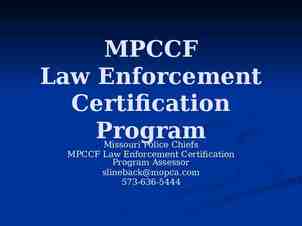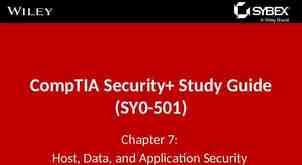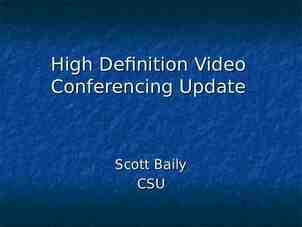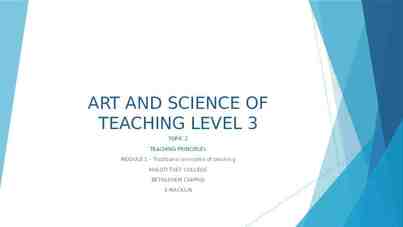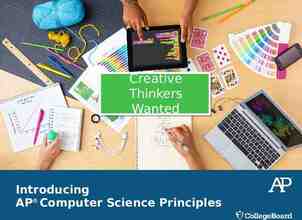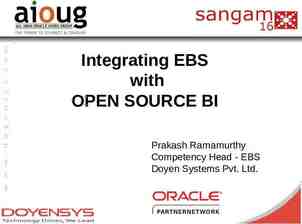UPDATE: Division of Materials Research Dr. Linda Sapochak, Division
35 Slides8.91 MB

UPDATE: Division of Materials Research Dr. Linda Sapochak, Division Director Materials Research National Science Foundation Nematic Twist-bend nematic Chiral nematic a b c Where Materials Begin & Society Benefits! MRSEC Director’s Meeting, October 18, 2018 Alexandria, VA

Presentation Outline NSF & Materials Research Programs, Staff & Budget DMR & NSF Big Ideas Partnering & Leveraging DMR Strategic Planning .how you can help! Where Materials Begin & Society Benefits! MRSEC Director’s Meeting, October 18, 2018 Alexandria, VA

U. S. National Science Foundation (NSF) National National Science Science Board Board France Córdova Office Office of of Diversity Diversity & & Inclusion Inclusion Director Director Office Office of of the the General General Counsel Counsel Office Office of of the the Inspector Inspector General General 7 B/ FY18 Office Office of of Integrative Integrative Activities Activities Office Office of of International International Science & Science & Engineering Engineering Biological Biological Sciences Sciences Mathematical Mathematical & & Physical Physical Sciences Sciences Computer Computer & & Information Information Sci Sci &Eng &Eng Social, Social, Behavioral, Behavioral, & & Economic Economic Sciences Sciences Engineering Engineering Education Education & & Human Human Resources Resources Geosciences Geosciences Budget, Budget, Finance, Finance, & & Award Award Management Management Office Office of of Legislative Legislative & & Public PublicAffairs Affairs Information Information & & Resource Resource Management Management Where Materials Begin & Society Benefits! MRSEC Director’s Meeting, October 18, 2018 Alexandria, VA

Mathematical and Physical Sciences (MPS) MPS Assistant Director Anne Kinney Office of Multidisciplinary Activities 1.5B (FY 18 budget) 60.3 Acting Chemistry Director Carol Bessel Astronomical Sciences Director Richard Green 307.3 M Materials Research Director Linda S. Sapochak 245.7 M Mathematical Sciences Director Juan Mezza M 337.3 M Physics Director C. Denise Caldwell ONE OF THE LARGEST & DIVERSE DIVISIONS in all of NSF 310.8 M 236.5 M Where Materials Begin & Society Benefits! MRSEC Director’s Meeting, October 18, 2018 Alexandria, VA

Sean L. Jones Miriam Deutsch Alex Simonian Eugene Zubarev

FY15 307M FY16 310M FY17 314M FY18R 283M FY18 337M M 23 18 in FY DMR Budget Distribution 12% other MRSEC & PREM Topical Materials Research Programs & DMREF 19% 40% National Facilities & Instrumentation 18% Science and Technology Centers 2% REU Sites 1.8% CAREERs 7% Where Materials Begin & Society Benefits! MRSEC Director’s Meeting, October 18, 2018 Alexandria, VA

DMR Program Updates Topical Materials Research Programs Biomaterials Ceramics Electronic & Photonic Materials Metals and Metallic Nanostructures Polymers Centers & Teams FY19 Condensed Matter & Materials Theory Condensed Matter Physics Solid State and Materials Chemistry Materials Research Science & Engineering Centers (MRSEC) Cornell High Energy Synchrotron Source (CHESS) National High Magnetic Field Laboratory (NHMFL) Partnerships in Research & Education in Materials (PREM) Cross-Cutting Activities Diversity International National Facilities & Instrumentation Program FY19 Education M 23 18 in F Y Designing Materials to Revolutionize & Engineer our Future (DMREF) Center for High Resolution Neutron Scattering (CHRNS) National Nanotechnology Coordination Network (NNCI) Materials Innovation Platforms (MIP) 9 1 FY Where Materials Begin & Society Benefits! MRSEC Director’s Meeting, October 18, 2018 Alexandria, VA

Topical Materials Research Programs (TMRPs) Biomaterials (BMAT) Electronic & Photonic Materials (EPM) Metals and Metallic Nanostructures (MMN) Polymers (POL) Condensed Matter Physics (CMP) Solid State and Materials Chemistry (SSMC) Submission Deadline: Nov 1 Open Window – No Deadlines Where Materials Begin & Society Benefits! MRSEC Director’s Meeting, October 18, 2018 Alexandria, VA

National High Magnetic Field M 5 3 Laboratory (NHMFL) or “MagLab” The only ultra high magnetic field laboratory in the U.S. NHMFL User Program: 7 specialized facilities distributed across the three sites. RENEWED IN 2017 International leader in high magnetic field science and superconducting materials and magnet design. Where Materials Begin & Society Benefits! https://nationalmaglab.org/ MRSEC Director’s Meeting, October 18, 2018 Alexandria, VA

2018 Update on the Cornell HighEnergy Synchrotron Source (CHESS) CHESS is a high-intensity, hard X-ray source powered by the Cornell Electron Storage Ring (CESR), buried under the Cornell campus. The US has six federally-funded light sources. Two of these are high-intensity, hard X-ray facilities: CHESS The Advanced Photon Source (APS) at Argonne National Lab CHESS User Program - 11 experimental stations 700 users/yr ( 10% of national capacity) Stewardship: MPS(DMR)-ENG-BIO Where Materials Begin & Society Benefits! MRSEC Director’s Meeting, October 18, 2018 Alexandria, VA

CHESS Budget History 1993-2018 25,000,000 Dedicated ENG 20,000,000 NIGMS DBI DMR 15,000,000 10,000,000 Interleaved 5,000,000 Parasitic 0 9 19 3 95 9 1 9 19 7 9 19 9 0 20 1 0 20 3 0 20 5 0 20 7 Fiscal Year 0 20 9 1 20 1 1 20 3 1 20 5

Future of CHESS – U (is BRIGHT!) At the completion of CHESS-U in 2018, CHESS will be the premier synchrotron source in the US for high-energy, high-flux x-ray studies. NSF Stewardship of CHESS ends April 1, 2019. CHESS-U adopts “partnership” model. Other partners include NIH, DOD and industry. Pending NSF proposal to support specific beamlines at CHESS-U. Where Materials Begin & Society Benefits! MRSEC Director’s Meeting, October 18, 2018 Alexandria, VA

NSF Partnership with NIST: The Center for High Resolution Neutron Scattering (CHRNS) Interagency Agreement: NSF-DMR provides support for six instruments ( 3M/yr) NIST provides the source of the neutrons Operates with 99% reliability Serves 500 scientists Contributes to 25 PhD’s Expands the US neutron community Summer School Summer Undergraduate Research Fellowship Summer high school internship program. Review Timeline NSF award Guidance April 2019 Proposal Due 11/31/2019 March 2020 Site Visit May 2020 decision May-June-July Implementation IAA 09/01/2020 AWD Date Where Materials Begin & Society Benefits! MRSEC Director’s Meeting, October 18, 2018 Alexandria, VA

Where Materials Begin & Society Benefits! MRSEC Director’s Meeting, October 18, 2018 Alexandria, VA

Materials Genome Initiative (MGI) Established June 2011 and rechartered in 2018! To help businesses discover, develop, and deploy new materials twice as fast at a fraction of the cost. Presidential SubCommittee Chairs: Linda Sapochak (NSF) Julie Christodoulou (ONR) Secretary: Jim Warren (NIST) OSTP: Lloyd Whitman Designing Materials to Revolutionize & Engineer our Future (DMREF) John Schlueter and Eva Campo Materials Innovation Platform (MIP) Charles Ying Where Materials Begin & Society Benefits! MRSEC Director’s Meeting, October 18, 2018 Alexandria, VA

Where Materials Begin & Society Benefits! MRSEC Director’s Meeting, October 18, 2018 Alexandria, VA

Quantum Leap : Asking Ambitious Questions Q1: Are there fundamental limits to how far we can push the entanglement and coherence frontiers for quantum states? Are there limits in time, distance, or scale? Q2: What can we learn from quantum phenomena in naturally-occurring and engineered quantum systems, including emergent behavior, complexity, quantumclassical boundaries, and their theoretical foundations? Q3: How do we galvanize the science and engineering community to enable quantum devices, systems, and technologies that surpass classical capabilities? Where Materials Begin & Society Benefits! MRSEC Director’s Meeting, October 18, 2018 17 Alexandria, VA

Taking the Leap: First Steps Quantum Computing Ideas Lab: 42 submissions EFRIs: quantum memory, repeaters, topological metamaterials, networks DCL: Engineering Quantum Integrated Platforms for Quantum Communication (EQuIP) Technologies Triplets: 66 applicants and devices DCL: Enabling QL: Achieving room-temperature quantum logic DCL RAISE: Practical demonstrations in Quantum Leap: 150 submissions Quantum workshops NSF/DOE/AirForce summer school: 380 applicants FY 17-18 Activities underway Understanding natural and engineered systems Enabling Practical-scale Quantum Computing: Expeditions in Computing Braiding DCL: 32 submissions Fundamental science DCL: Quantum Leap in Chemistry: molecular approaches Contact: Tomasz Durakiewicz Where Materials Begin & Society Benefits! MRSEC Director’s Meeting, October 18, 2018 Alexandria, VA

Work at the Human-Technology Frontier – Shaping the Future (FWHTF) To understand and build the human-technology partnership. To design and develop new technologies to augment human performance. To illuminate the emerging socio-technological landscape. To foster lifelong and pervasive learning through technology. Solicitation FY18: FWHTF: Augmenting cognitive and physical capabilities [Due: June 4, 2018] Focus: augmenting cognition; embodied ICAs Two sizes: 0.75m - 1.5m; 1.5m - 3m. 300 LOIs ENG: 9m of 27m total Where Materials Begin & Society Benefits! MRSEC Director’s Meeting, October 18, 2018 19 Alexandria, VA

Harnessing Data for 21st Century Science and Engineering NSFBig BigIdea: Idea:Harnessing Harnessingthe theData DataRevolution Revolution NSF “ a bold initiative to develop a cohesive, national scale approach to research “ a bold initiative to develop a cohesive, national scale approach to research data infrastructure and a 21st-century workforce capable of working data infrastructure and a 21st-century workforce capable of working effectively with data” and more effectively with data” and more Where Materials Begin & Society Benefits! MRSEC Director’s Meeting, October 18, 2018 Alexandria, VA

Computation & Data for Materials Research Building and using a Materials Innovation Infrastructure Successor to DIBBs (Data Infrastructure Building Blocks) and Software Infrastructure for Sustained Innovation (SI2) Data Infrastructure Creation for Data-Enabled Research at all levels individual investors, DMREF teams, MRSEC, and national facilities Collaborate with cyberinfrastructure experts Computational and Data-Enabled Science and Engineering (CDS&E) https://www.nsf.gov/funding/pgm summ.jsp?pims id 504813 Creation, development, and application of innovative algorithms, software, data analytics, Research and novel techniques that utilize digital data in innovative ways. Where Materials Begin & Society Benefits! MRSEC Director’s Meeting, October 18, 2018 Alexandria, VA

Transdisciplinary Research In Principles Of Data Science (TRIPODS) aims to bring together the statistics, mathematics, and theoretical computer science communities to develop the theoretical foundations of data science through integrated research and training activities through small collaborative Institutes. UA-TRIPODS: Building Theoretical Foundations for Data Sciences: Hao Zhang, University of Arizona Foundations of Model Driven Discovery from Massive Data: Jeffery Brock, Brown University (Convergence and EPSCoR co-funding) Berkeley Institute on the Foundations of Data Analysis: Michael Mahoney, University of California, Berkeley TRIPODS: Towards a Unified Theory of Structure, Incompleteness and Uncertainty in Heterogeneous Graphs: Lise Getoor, University of California, Santa Cruz From Foundations to Practice of Data Science and Back: John Wright, Columbia University TRIPODS: Data Science for Improved Decision-Making: Learning in the Context of Uncertainty, Causality, Privacy, and Ne twork Structures : Kilian Weinberger, Cornell University (Convergence co-funding) Transdisciplinary Research Institute for Advancing Data Science (TRIAD): Xiaoming Huo, Georgia Institute of Technology Collaborative Research: TRIPODS Institute for Optimization and Learning: Katya Scheinberg, Lehigh University; Han Liu, Northwestern University; Francesco Orabona, State University of New York at Stony Brook Institute for Foundations of Data Science (IFDS): Piotr Indyk, Massachusetts Institute of Technology Topology, Geometry, and Data Analysis (TGDA@OSU): Discovering Structure, Shape, and Dynamics in Data: Tamal Dey, The Ohio State University Algorithms for Data Science: Complexity, Scalability, and Robustness: Sham Kakade, University of Washington https://nsf-tripods.org/ Institute for Foundations of Data Science: Stephen Wright, University of Wisconsin-Madison (Convergence co-funding) TRIPODS – A Resource Where Materials Begin & Society Benefits! MRSEC Director’s Meeting, October 18, 2018 Alexandria, VA

Proposals were due May 29, 2018 Likely run again in 2019 Contact: Eva Campo & Daryl Hess TRIPODS X projects will foster relationships between researchers in science & engineering domains and foundational data scientists by leveraging existing NSF investments in the TRIPODS organizations.

Living Interfaces: Exploring Synthetic Biology and Evolution for the Development of NextGeneration Biomaterials M.G. Finn [email protected] Square-Table (type workshop) to identify and explore synthetic biology and evolutionary approaches to develop the next generation of biomaterials. Contact: Germano Iannacchione Where Materials Begin & Society Benefits! MRSEC Director’s Meeting, October 18, 2018 Alexandria, VA

Contact: Leonard Spinu NSF 19-013 Dear Colleague Letter: Mid-Scale Research Infrastructure (Midscale RI) Opportunities Contact: Tessema Guebre Where Materials Begin & Society Benefits! MRSEC Director’s Meeting, October 18, 2018 Alexandria, VA

Partnering & Leveraging Where Materials Begin & Society Benefits! MRSEC Director’s Meeting, October 18, 2018 Alexandria, VA

Where Materials Begin & Society Benefits! MRSEC Director’s Meeting, October 18, 2018 Alexandria, VA

Advanced Material Sciences Topics of mutual interest: Synthetic Biology for Materials a. Maneesh Gupta at AFRL/RX; Jermont Chen at AFRL/AFOSR/AOARD b. Steve Peretti (CBET), Shubhra Gangopadhyay (ECCS), Germano Iannacchione (DMR) and Linda Sapochak (DMR) at NSF Materials for Extreme Environments (Structural Material Challenges) c. Steve Russ from AFRL/RX d. Tom Kuech (CMMI), Gary Shiflet (DMR) and Sean Jones (DMR) Quantum Materials e. Augustine Urbas at AFRL/RX f. Eric Johnson (ECCS) and Tomasz Durakiewicz (DMR) at NSF Convergence of AI, data science, and materials science g. Chuck Ward from AFRL/RX; Ali Sayir at AFRL/AFOSR h. Alexis Lewis (CMMI), Tony Kuh (ECCS), John Schlueter (DMR) and Eva Campo (DMR) at NSF

Growth Areas in DMR Nematic Twist-bend nematic Chiral nematic a b c Where Materials Begin & Society Benefits Material Sustainable Development Recyclable Plastics and Alternative Materials Integrated Tool Development for Materials Synthesis & Characterization NSF-DOE Decadal Study of Materials National Academy Study? MRSEC Director’s Meeting, October 18, 2018 Alexandria, VA

DMR Strategic Planning .how you can help! Where Materials Begin & Society Benefits MRSEC Director’s Meeting, October 18, 2018 Alexandria, VA

DMR’s Mission “to promote fundamental materials research; to advance materials discovery through prediction, design, synthesis and understanding of materials and materials phenomena; to foster access to and development of a materials research infrastructure; and to prepare the next generation of materials researchers” DMR’s Core Values Community Integrity Creativity Dedication DMR Strategic Plan DMR’s Vision “Lead the world in catalyzing materials innovation that shapes the future” DMR’s Pillars Organizational Excellence Materials Research Advancement Materials Research Infrastructure Materials Community Partnerships Cross-Cutting Activities Where Materials Begin & Society Benefits! MRSEC Director’s Meeting, October 18, 2018 NSF-3 Alexandria, VA

MRSEC & Other NSF Centers 2014 IDL/MRL University Year Initiated Cornell 1960 Pennsylvania 1960 Northwestern 1960 Chicago 1961 Harvard 1961 MIT 1961 Pennsylvania State 1974 Ohio State 1982

What is the mission of the MRSEC program now? in the age of “convergence”, “data science”, “MGI”? Where Materials Begin & Society Benefits! MRSEC Director’s Meeting, October 18, 2018 Alexandria, VA

MRSEC Program Goals? Stimulate and support outstanding interdisciplinary research and education in materials of a scope and complexity that requires a center Critical mass of investigators of complementary expertise Address fundamental, complex materials problems that are intellectually challenging and important to society Foster partnerships between academia and industry, National labs, and international Broaden participation of groups under-represented in the sciences Re-competition model and Seed program provide a mechanism for a reinvention and adaptation to address emerging areas (flexibility)

THANK YOU! [email protected] Ideas? Questions? Concerns? Please feel free to contact me directly! Where Materials Begin & Society Benefits! MRSEC Director’s Meeting, October 18, 2018 Alexandria, VA

